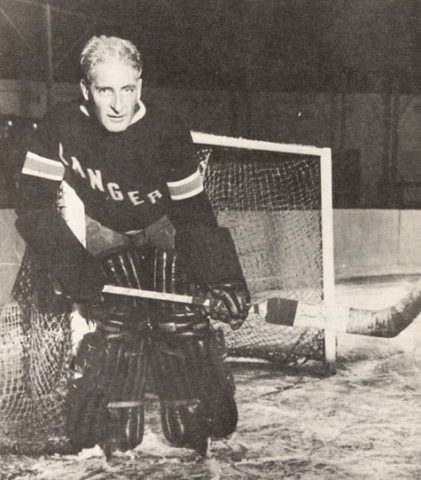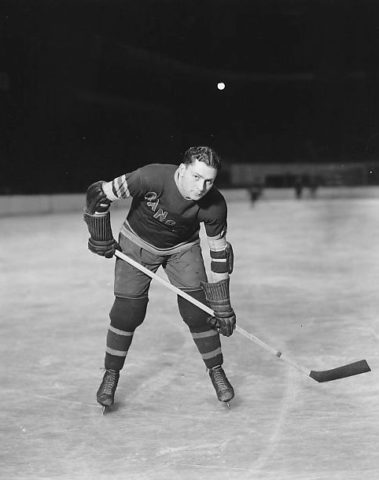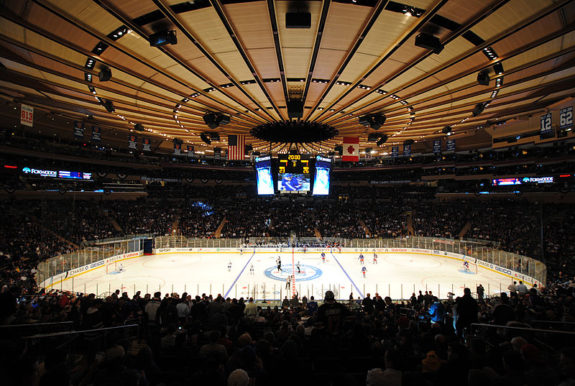When the New York Rangers and 1940 are put together, there is a certain stigma that is attached to it. The feeling is not unlike that of the Boston Red Sox and 1918, or the Chicago Cubs and 1908. For the Rangers, 1940 was the year that they won their 3rd Stanley Cup in a twelve year period. However, it was also the last Stanley Cup that the Rangers would win for 54 years, and chants of “1940!” from fans around the league (mainly Long Island and New Jersey) were a constant reminder of the Rangers’ futility for more than a generation. But while Rangers fans know the significance of 1940 when it is mentioned, most do not know that the Rangers’ squad from that year was the best team in franchise history.
How the 1940 New York Rangers Came to Be
The 1939-40 New York Rangers were a team in transition. After the 1936-37 season, the famous “A line” of Frank Boucher, Bun Cook, and Bill Cook, which was together since the Rangers debuted in 1926-27, was broken up. The Rangers had reached the Stanley Cup Finals in 1937, losing to the Detroit Red Wings 3 games to 2, but had failed to get back to the Finals in the next two seasons. Before the ’39-’40 season began, Lester Patrick, the Rangers’ coach and general manager since 1926, stepped down as head coach, and turned over the reins to Boucher. In later years, Boucher would say that, “what Lester Patrick gave me was the best team I’d ever seen.”

The backbone of the Rangers team, as it would be for many years in the team’s history, was its goaltending. In 1940, the Rangers goaltender was Davey Kerr, who was one of the best goalies in the team’s history. In 1938, Kerr became the first NHL player to be on the cover of Time Magazine, and his play on the ice more than explained why he deserved that honor. During the season, Kerr played in every minute of every game, posting a 1.54 goals against average, led the league with 8 shutouts, and went on to win the Vezina Trophy as the NHL’s top goaltender. Kerr, along with the rest of his teammates, set a franchise record with a 19-game unbeaten streak that lasted from November 23rd to January 13th (the streak was bested by Mike Richter in 1994).
One of the reasons why Kerr had such a great year in goal was because of the four defensemen in front of him. The first defensive pair was Art Coulter and Muzz Patrick (Lester’s youngest son), and the second pair was Ott Heller and Walter “Babe” Pratt. All four defensemen were durable, as they were the only defensemen to play for the Rangers during the 48-game regular season (Patrick didn’t play in two games, Heller didn’t play in one). Coulter was the Rangers’ captain, a physically punishing hitter who earned the nickname “The Trapper” for his shot-blocking ability.
1940 New York Rangers Offense
As good as the 1939-40 Rangers were defensively, their depth up front was as good as any Rangers team has had before or after. The Rangers’ top line, known as “the Bread Line” was Neil Colville at center, his brother Mac at right wing, and Alex Shibicky at left wing. The line played together coming up through the many ranks of the Rangers’ system, and they proved to be the team’s bread and butter, thus earning their nickname.
RELATED: 69 Terrific NHL Nicknames

The Rangers’ second line was known as the “Powerhouse Line,” with Phil Watson centering Lynn Patrick (Lester’s older son) and Bryan Hextall. While this line was successful in 1939-40, as Hextall led the team in goals and points and Watson led the team in assists, each of their best season’s were two years away. In 1941-42, the Rangers finished first in the NHL, Patrick led the league in goals with 32, and Hextall, Patrick, and Watson finished 1st, 2nd, and 4th in points respectively in the league. On the 3rd line, the Rangers had Alf Pike, Dutch Hiller, and Clint Smith, who all contributed with timely scoring, and could play any forward position. And if that wasn’t enough offense, Kilby McDonald, who was an extra forward, scored 15 goals and won the Calder Trophy as the NHL’s rookie of the year.
Despite a slow start, the Rangers finished the regular season with a 27-11-10 record (due in large part to a 19-1-5 stretch that included the 19-game unbeaten streak), and finished 2nd in the NHL standings behind the Boston Bruins. The Rangers played the Bruins in the semifinals, and upset the Bruins in a six-game series. With the Rangers trailing two games to one in the series, Kerr posted consecutive 1-0 shutouts in Games 4 and 5 to turn the tide in the series, and the Rangers moved on to face the Toronto Maple Leafs in the Stanley Cup Finals.
1940 Rangers to the Finals
In the early years of the National Hockey League, one of the disadvantages that the Rangers had by playing their home games at Madison Square Garden was that if they made it to the Stanley Cup Finals, they would have to play most of their home games on the road because of the Ringling Brothers Circus that came to MSG every spring. In the Finals, the Rangers played the first two games at home, but had to play the remainder of the series on the road in Toronto. The Rangers won the first two games at home, but then dropped the next two in Toronto.

In the pivotal Game 5, the goaltending duel between Kerr and the Maple Leafs’ Turk Broda dragged the game into overtime, where Muzz Patrick gave the Rangers the victory with his 3rd goal of the playoffs. In Game 6, the Rangers rallied from a 2-0 deficit in the 3rd period on goals by Neil Colville and Alf Pike to send the game into overtime. Two minutes into the overtime period, Hextall took a Watson pass and fired a high wrist shot past Broda to give the Rangers the Stanley Cup.
Why was this team the greatest in Rangers history? First, it’s hard to find a team where nearly half of the roster is made up of Hall of Famers. 6 of the Rangers’ 15 regular players are in the Hall of Fame (N. Colville, Coulter, Hextall, L. Patrick, Pratt, Smith) and coach Frank Boucher and General Manager Lester Patrick are also Hall of Famers. The 1940 New York Rangers also had the 3rd highest regular season winning percentage in team history, and the highest winning percentage for any of the Rangers’ four Stanley Cup Championship teams.
Looking Back on the 1940 NY Rangers
Yet beyond the numbers, this 1940 New York Rangers team, in Boucher’s first year behind the bench, changed the way the game was played. The Rangers were the first team to play a “box defense” on the penalty kill, which is a system used by many NHL teams today. Also, Boucher was the first coach to pull the goaltender during a delayed penalty, which is still done regularly over seventy years later.
Rangers fans may not like hearing 1940, but it’s the year that they had the best team in franchise history.
This article was originally published in June, 2012.